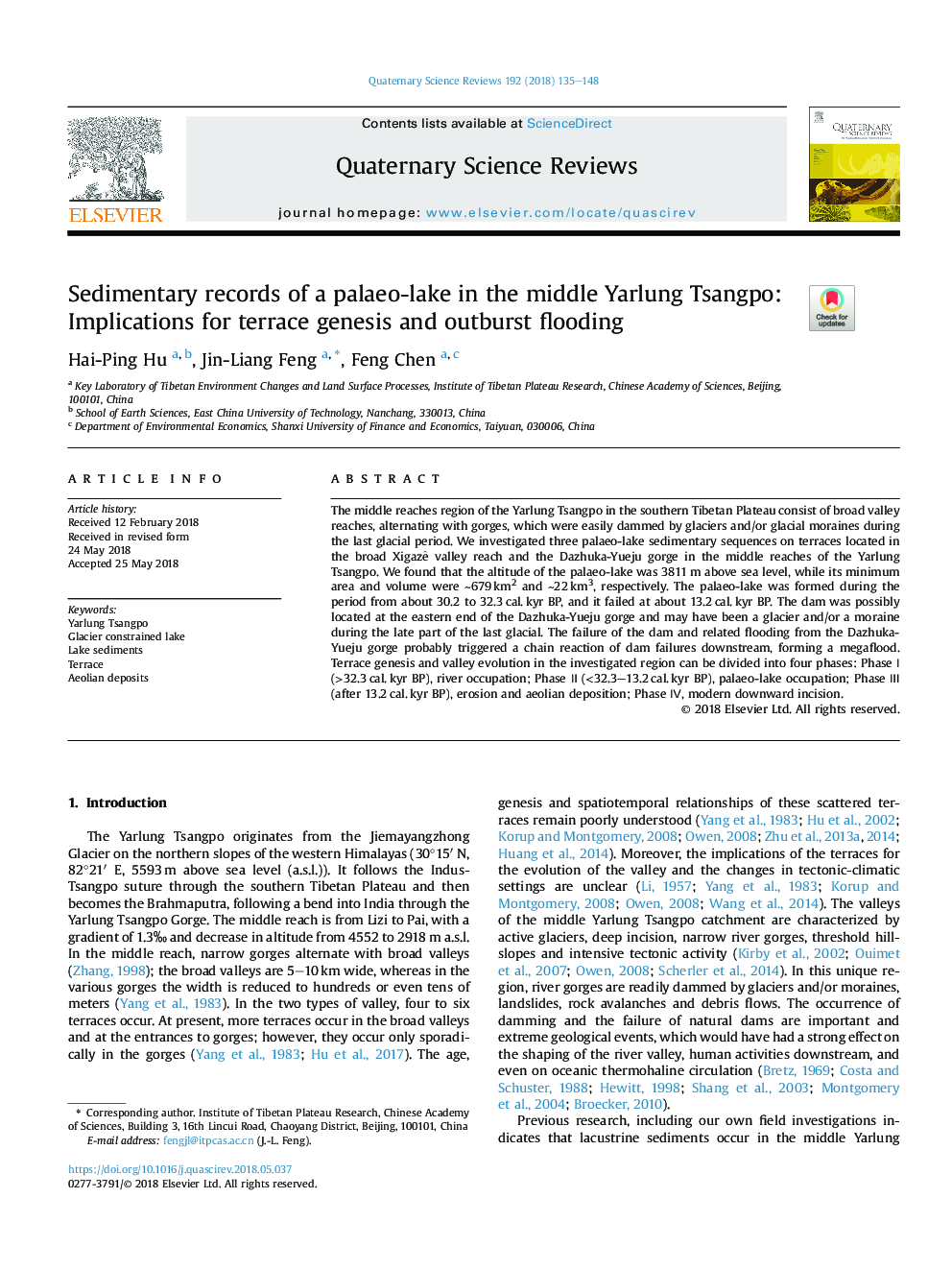| Article ID | Journal | Published Year | Pages | File Type |
|---|---|---|---|---|
| 8914718 | Quaternary Science Reviews | 2018 | 14 Pages |
Abstract
The middle reaches region of the Yarlung Tsangpo in the southern Tibetan Plateau consist of broad valley reaches, alternating with gorges, which were easily dammed by glaciers and/or glacial moraines during the last glacial period. We investigated three palaeo-lake sedimentary sequences on terraces located in the broad Xigazê valley reach and the Dazhuka-Yueju gorge in the middle reaches of the Yarlung Tsangpo. We found that the altitude of the palaeo-lake was 3811â¯m above sea level, while its minimum area and volume were â¼679â¯km2 and â¼22â¯km3, respectively. The palaeo-lake was formed during the period from about 30.2 to 32.3â¯cal.â¯kyr BP, and it failed at about 13.2â¯cal.â¯kyr BP. The dam was possibly located at the eastern end of the Dazhuka-Yueju gorge and may have been a glacier and/or a moraine during the late part of the last glacial. The failure of the dam and related flooding from the Dazhuka-Yueju gorge probably triggered a chain reaction of dam failures downstream, forming a megaflood. Terrace genesis and valley evolution in the investigated region can be divided into four phases: Phase â
(>32.3â¯cal.â¯kyr BP), river occupation; Phase â
¡ (<32.3-13.2â¯cal.â¯kyr BP), palaeo-lake occupation; Phase â
¢ (after 13.2â¯cal.â¯kyr BP), erosion and aeolian deposition; Phase â
£, modern downward incision.
Related Topics
Physical Sciences and Engineering
Earth and Planetary Sciences
Geology
Authors
Hai-Ping Hu, Jin-Liang Feng, Feng Chen,
